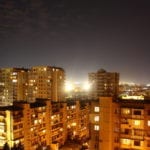Last Updated on 21 January 2025 by Cycloscope

Cycling in winter, in the coldest places in the world
trip to Siberia: an interview with Dino Lanzaretti
Cycling in winter is not pleasant to everyone, many await the arrival of the mild season to get the bike out of the garage, even just to use it to commute, let alone then, to make long journeys by bike. There are some though who love the cold, for whom a normal winter no longer suffices, those who go in search of the coldest winter in the world, who decide to take a trip to Siberia, by bike.
We never tire of reiterating that bicycle touring is for everyone, anyone can take a bike and leave, fortunately, this message seems to be passing, and more and more people decide to try the thrill of the bike trip. Cycle tourism is for everyone, but not all bike rides are made the same, some require uncommon determination and courage, among them there is certainly Siberia in winter, and it is difficult to imagine a more extreme journey.
Dino Lanzaretti had this courage, and his determination led him to ride the coldest winter in the world, overcoming difficulties and risks that “normal” bicycle travelers like us can hardly even conceive.
We asked Dino to tell us a little about himself, about this trip, and his story as a bike traveler, and that’s what came out of it.
Hmmm, what about something easier?
9 easy destinations for your first bicycle trip
If you’re just approaching this world
How to start bicycle touring
Essential gear for bicycle touring and bikepacking
30 Rules (or advice) to follow when traveling by bike
How to turn a piece of junk into your next touring bike for less than 100$
11 of the best touring bikes under 2.000$
11 Touring Bikes under 1,000$
10 great bike panniers compared
14 lightweight tents under 200$
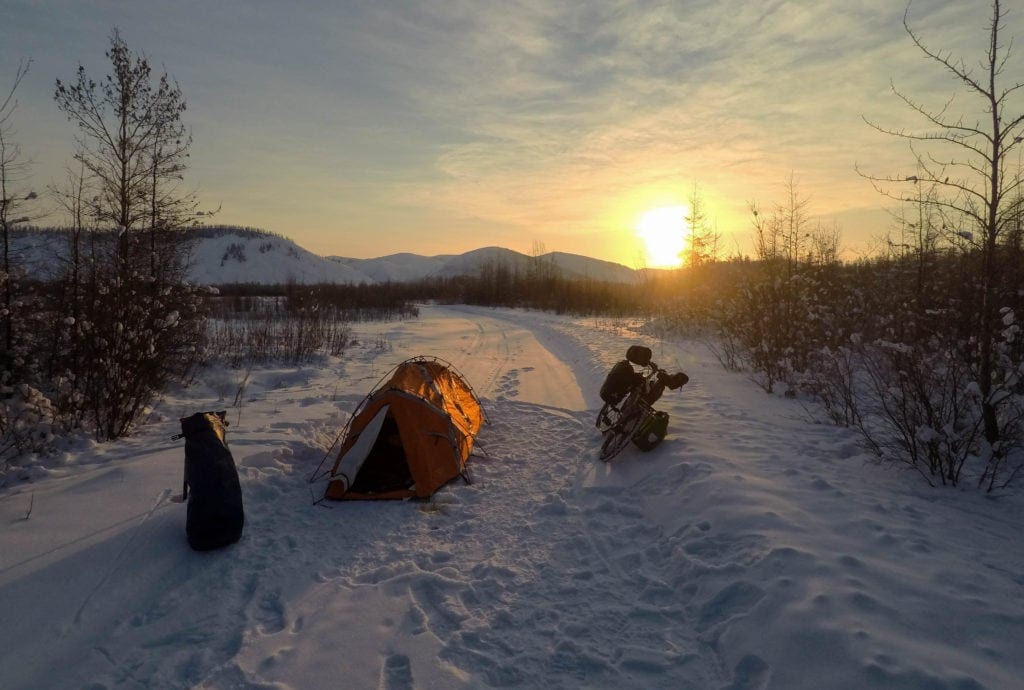
Hi Dino and thank you for accepting this interview. First of all, tell us something about yourself and your relationship with bike touring. Where are you from? How old are you? When did you start traveling by bike?
I was born 40 years ago in Santorso, a small village at the foot of the Dolomites, in the province of Vicenza. When I was twenty, I took my backpack and started to wander around the world on the wave of the old hippies of the sixties, then one day in India I discovered a love for the mountains and from that moment I dedicated my soul and body to mountaineering.
I began to travel to every corner of the planet to climb the highest mountains, in the backpack I did not have any more books and ethnic clothes but crampons and ice axes. I soon realized, however, that I did not have the fearless mountaineer’s attitude and therefore looked for an alternative way to my happiness. I wanted to continue to struggle to savor the taste of getting somewhere and the bike seemed to be something interesting. I had a €100 busted bicycle as a gift and I randomly went cycling in Asia. From the first ride, it was pure love. Since then I haven’t come down from a bicycle!
Among all the trips made (list them) what was your favorite and why?
To date, I have cycled over 70,000km through Indochina, forbidden Tibet, the Americas, the Middle East, Africa, and now Siberia all the way home. I have no doubts as to which is the best trip, surely the next one.
Let’s talk a bit about your last trip, from the extreme east of Siberia to Italy, illustrate the route, and the motivations, and tell us which part of the route has moved you the most and why.
To illustrate the path I’ll be quicker I am attaching an animation of the roads I have traveled: (above)
I needed a new destination, a place unknown to me, I wanted to learn again how to get by in an environment never seen before, and I wanted to go back to studying a new way of traveling. After all those kilometers I’ve made up to today I needed to return a newbie, to get back into the game. Traveling on easier lands had begun to bore me. This is why I wanted to try to cross the coldest lands on the planet, simply out of pure curiosity.
The greatest emotion I will ever be able to identify, I have been machine-gunned every day by sensations so intense and new that making a choice is impossible for me. I could tell you the arrival at Yakutsk after 2200km at -50°C but it almost pales in front of that night in a tent with nomads in Mongolia. In certain situations of fatigue and stress, a smile from a child you meet on the road can really move you and unleash such joy as to be compared to the thrill of arriving on top of Everest.
Pedaling as we do, it is really easy to get upset by what happens on the street, just a meeting, a difficult situation passed, or a red fire sunset to relieve all the efforts of the day, we chose the bike because we are dependent on emotions and is It is not important for me to identify the most intense.

What are the biggest difficulties in traveling by bike in winter? What changes when temperatures drop so much below zero?
I think that up to -30°C it does not change much if you are well equipped, cycling in the cold is pleasant and you can sleep in the tent without too much difficulty if you have high-altitude mountaineering materials. However, there is an invisible wall against which you bang when temperatures fall above -35°C. It is a perceptible threshold even without the need for a thermometer because everything changes in a second.
The air begins to pinch the nostrils and breathing is painful, the eyeballs begin to freeze and you must constantly blink the eyelids to avoid being blinded, the breath coming out of the mouth freezes instantly and falls back on the body covering you with ice. By bike, you are submerged in the snow even if it is not snowing but the tragedy takes place in a tent when the body’s moisture freezes the inner wall and the sleeping bag greatly compromising the insulating capacity.
To melt the snow then, takes a lot more time, and removing the bulky gloves to handle the equipment is very dangerous and often painful. I could only remain with the work gloves for less than 30 seconds, after which I screamed for the pain of the chilblains. In addition, even the gas freezes, and turning on the stove becomes impossible. Moreover, plastic first becomes as hard as marble and then as fragile as crystal, and therefore it becomes difficult to handle any part of the equipment.
What did you eat?
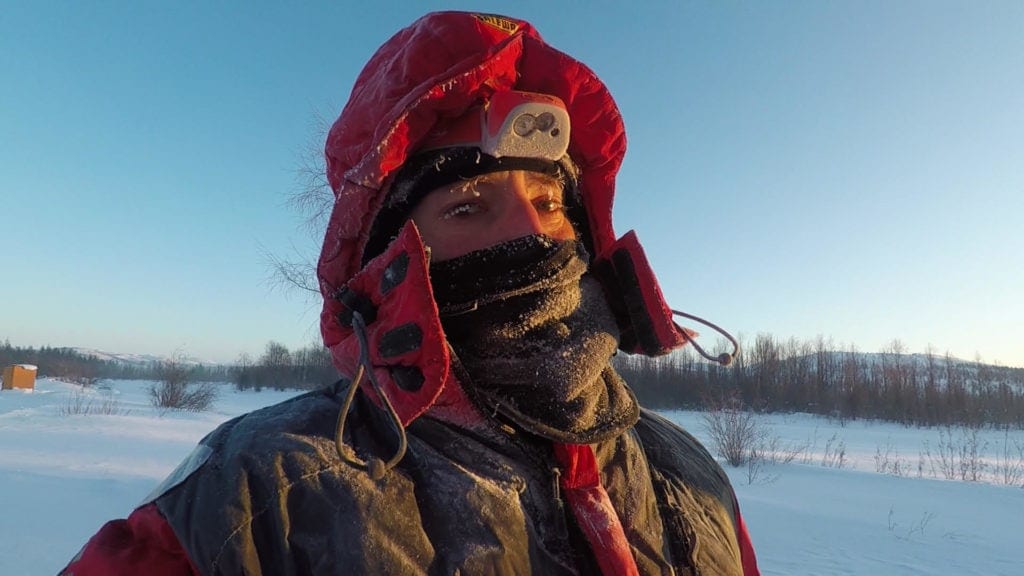
While I was in Siberia I didn’t eat enough, and in fact, I lost more than 10kg. However, I could eat slices of salami and a kind of dry bread that I broke into small pieces. I always bought food for 10/15 days such as whole salami, sugar, chocolate, biscuits, and oats for breakfast.
The problem was that everything was frozen, so I put a frozen salami inside the sleeping bag when I went to sleep, in the morning it was unfrozen and then I could cut it into slices that were frozen at once in my hands, and then I kept it warm inside the boots so I could snap it while cycling.
In order to drink, I used to melt snow in the morning and for two liters of water, I used more than two hours with the stove on. The chocolate helped me a lot but the secret weapon was the oats that I consumed in quintals during the only hot meal of the day, the breakfast, while I thawed the snow.
What happens to a bicycle at those temperatures? What are the biggest mechanical problems?
Everything in plastic is destroyed and all that is lubricated is nailed. So I replaced every plastic part with aluminum and bought a special extreme-temperature grease that I used for cables, bearings, and chains.
At -55° anyway, the gearshift springs do not work properly anymore, but the problem was not very serious because I have hardly ever changed gears. Then you must never touch the bicycle with only the first layer of gloves because, being in steel, you can cold burn yourself.
What tires did you use?
I used the unsurpassable Schwalbe Marathon Winter, not heavily studded but terrifically reliable. Then I glued the tire to the rim to prevent it from slipping one on the other damaging the valve. Getting a flat tire at such extreme temperatures can be really very dangerous.
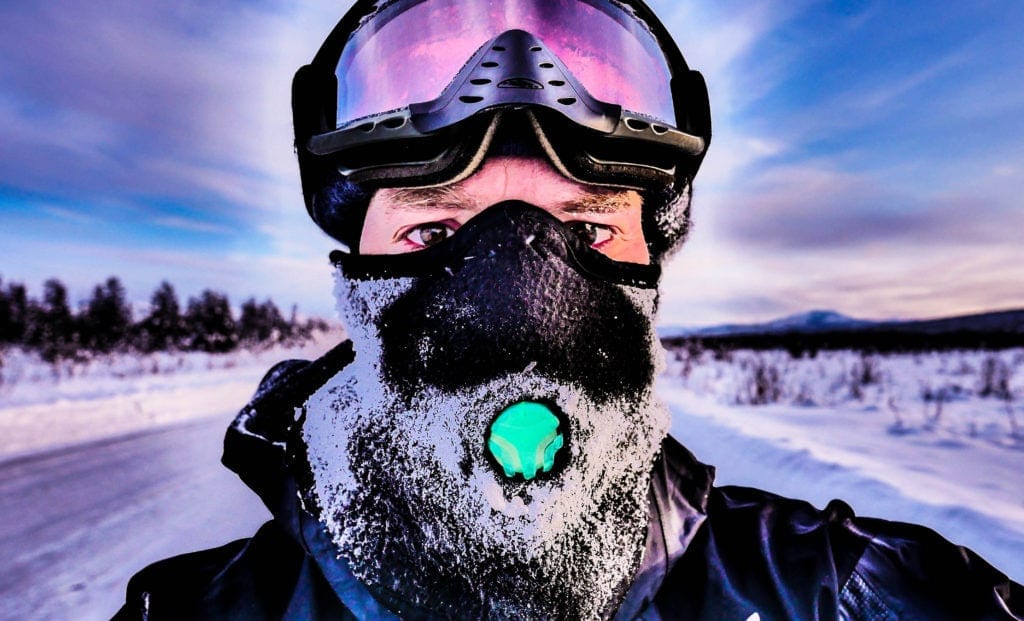
Cycling and camping when everything is covered in snow. What advice would you give to those who want to try?
The first advice I can give is that you have to feel good in the snow, I come from alpinism and the snow has been my element for many years. I have had many experiences at high altitudes and in extreme environments. Having said that, the use of high-quality materials not only makes the difference between an exciting adventure and a nightmare but in my case, it has made the difference between life and death.
First of all, you need a good sleeping bag and therefore you absolutely must invest in a goose-down product for mountaineering, to this day it is still the best insulating material. Then you have to keep your feet warm. I use special boots built for poles that resist temperatures of -100°C, they are undoubtedly the best investment of my entire trip.
In many cases, it is better not to use the tent, because it retains the humidity of your body which then inevitably falls in the form of ice above the sleeping bag, so to bivouac outdoors can make the difference. But you need a good mattress to keep the body as far as possible from the frozen ground, I usually use two of them, inflatable ones, since the air is the best insulation ever.
Obviously, you need a very good multi-fuel stove, the only way to get water is to melt snow. It’s amazing how long this process is and I’m talking about hours every morning with the stove pushed to maximum power. These are the basic materials for the so-called “normal” cold.
For anyone who wants to travel to Siberia in the middle of winter… it is better to have a chat in front of a good beer because their things are a damn lot more complicated and in addition to the world’s most coveted material you need a great lot of determination.
I’m sure our readers will be very curious about the equipment used. Can you make a list? What did you use the most and what turned out to be useless?
Even here I would end up finishing tomorrow if I made you a list, here is a video that illustrates how I was dressed.
Obviously, everything I had with me was essential for the success of the trip but my survival depended on some instruments in particular. The stove is undoubtedly the most important thing not to die, it is the only source of heat, and thanks to it you can drink and eat, I had four with me, to avoid any unexpected trouble.
But during one night at -60, all four were broken, and the rubber seals were shattered. Very useful was also an aluminum protection that I used every day to try to retain as much as possible the heat of the stove, you can watch this video to get an idea.
A flint is needed for fire because matches and lighters do not work at these temperatures. I had four with me in case I lost them in the snow. The least used item of equipment was the backup batteries because they were frozen immediately, becoming unusable.
Worst moment and best moment of this last trip?
There were so many really difficult moments while I was cycling in Siberia, I was afraid of dying more than once, especially at night in a tent at -60°C with the sleeping bag wrapped in ice. I spent several nights forcing myself to stay awake for fear of not waking up the next day. I even begged a bear’s attack simply to hug it and feel its warmth.
When I broke the stove desperation attacked me but then I managed to put everything in order and to learn day after day how to survive those extreme temperatures and above all not to make fatal mistakes. The best moment, as I said before, I can not and I do not want to identify, it was a journey as wonderful as it was difficult and every moment of absolute happiness was the son of many difficult situations.
What was your budget for this trip? How did you finance it?
This trip was very expensive for the technical material that I had to buy. You do not survive with poor equipment so I made a big initial investment. But then I spent almost nothing sleeping practically always in a tent except in the big cities where I stayed in hostels. I can say that my budget is always around 5$ a day.
I pay for my travels by breaking my back as a chef in Italy during the summer season and as I work 12 hours a day, I don’t have the time to spend what I earn, so at the time of departure, I always have the necessary. I have never asked for support from sponsors or patrons because it seems to me to pollute my freedom, I prefer to do an avalanche of hours at work and do not depend in any way on anyone.
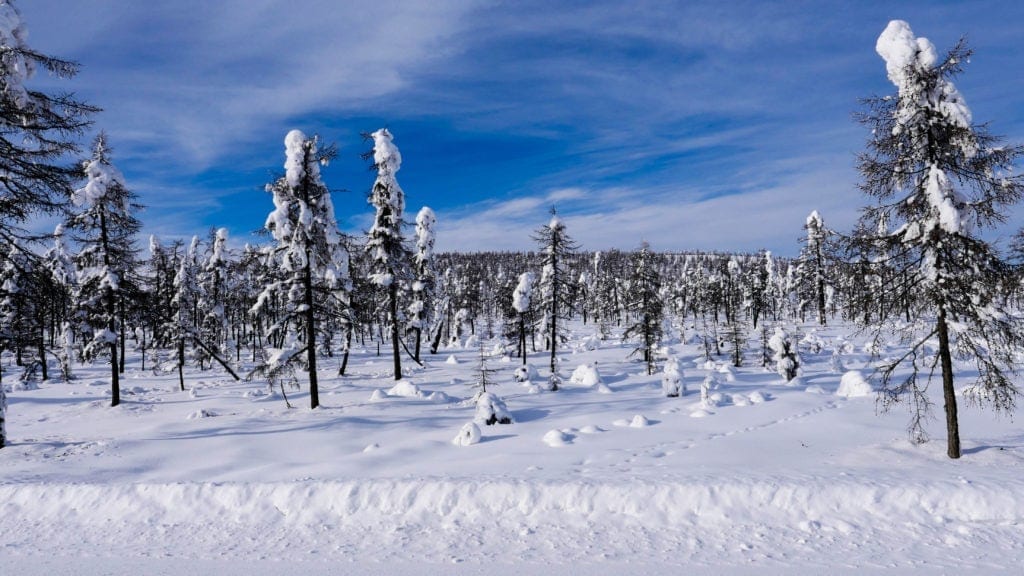
Going a little bit back in the years there is another trip of yours that we can consider quite extreme, the “unauthorized” crossing of Tibet. Can you tell us about it?
I crossed all of Tibet from west to east, from Kashgar to Kunming, in 6 months of absolute dirt roads, climbing passes above 5000 meters. To enter the forbidden Tibet from Xinjiang I had to pass more than ten checkpoints with the favors of darkness, I used to stand near the military garrisons and managed to crawl under the barriers while everyone was asleep.
Then I had to pass ten more to get out of Tibet and return to Yunnan, China. Fatality wanted that, at the last blockade, the police patrol saw me for a trivial mistake and I was arrested. With the payment of a ridiculous $20 bribe, I was released, as nobody knew what to do and how to manage a foreigner on a bike in those remote lands.
It was a unique experience, I went through the whole Himalayas living with the Tibetan nomads and staying alone for whole months. More than a trip it was a sort of daily meditation and the landscape, unique in the world, contributed to my absolute happiness.
The continued escape from the Chinese authorities, like the cat with the mouse, made this journey very difficult on one side but really worthy of an epic adventure that has bound me inextricably to this way of traveling, bypassing regimes and boundaries only for the pure will to go and see what’s beyond that curve.
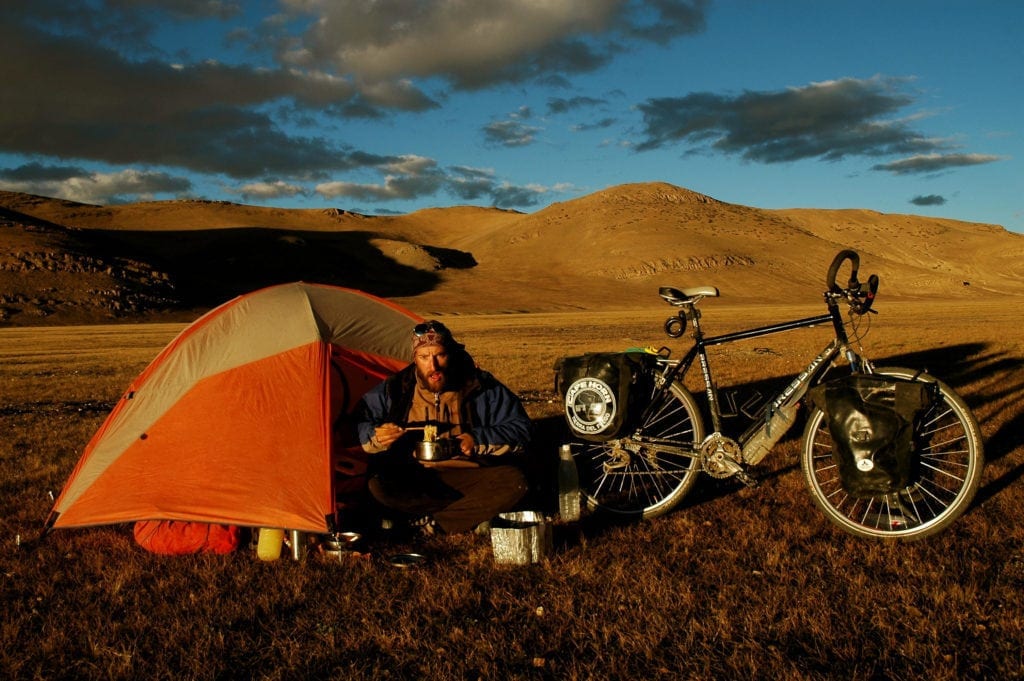
Would you do it again?
I will go again tomorrow. Unfortunately, however, the Chinese have intensified border controls and exacerbated penalties for foreigners discovered in Tibet without special permits. I know of dozens of other bicycle riders who have tried to sneak onto the plateau but to this day no one has succeeded. I was lucky because the winter had closed the mountain passes and the cars were not able to chase me.
I think I was the last Westerner to have been lucky enough to succeed. The spring after, those who tried it were heavily rebounded at the first checkpoint just after Kashgar.
Which of these two trips (Siberia and Tibet) has proved you the most? Both from a physical and an emotional point of view?
Without any doubt my trip to Siberia. In Tibet, I never feared for my life, while the first weeks in Siberia I pedaled with the fear of sitting on a pole beside me. But this last trip is undoubtedly the son of that idyllic experience in Tibet, there I realized that the solitude and the extreme environment were congenial to me and the desire to push me further and further was born between the Buddhist temples and the endless expanses of mountains.
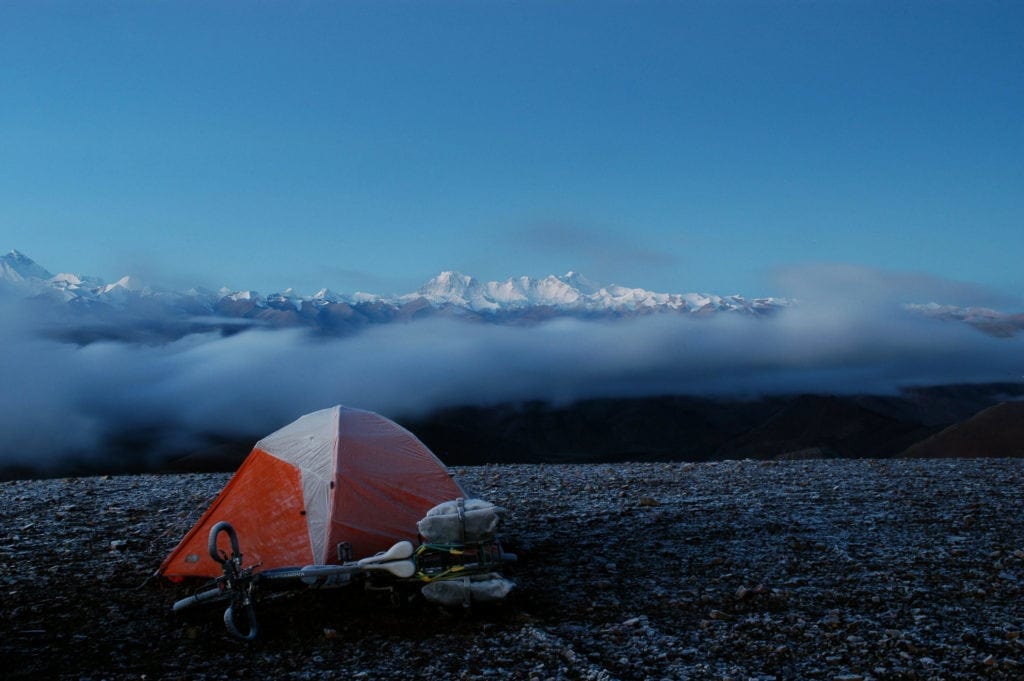
Is there anything in your experience as a bicycle traveler you regretted and you would do differently?
In 2010 I cycled with a visually impaired guy from Italy to Uzbekistan on a very heavy tandem. Our motivations for that trip were in stark contrast and the inspiration to ride to the other end of the world was not as intense. The result was that my dream turned into a nightmare from which I could not wake up because sponsors and families were expecting something else from us.
From that bad experience, I came out immediately leaving for Patagonia and disavowing any external help for each of my trips. I do not think I would do it differently, I would just start by myself as was the original project but who knows if things would have led to how they are today. So, in hindsight, it was a very sad experience but what I am today has also passed from there.
What are the points in favor of traveling solo? What are the negative aspects?
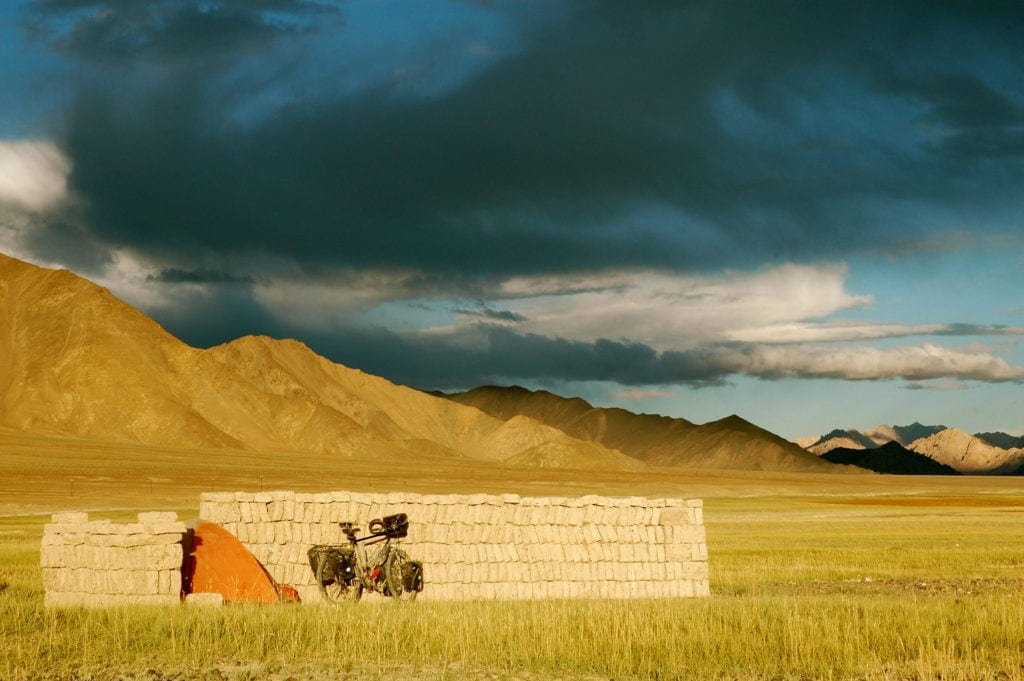
Like you, I have also traveled as a couple and I must say that I have spent some really incredible and intense moments. My biggest flaw, however, is that I have been on the road for many years and I have developed my personal travel routine with inviolable timing, rhythms, and priorities. It is logical that now it is much more difficult to adapt to another rhythm, different from mine.
The absolutely essential thing to travel in couples is to start from zero together, to develop the perfect progression of the journey, arising from the needs and pleasures of both. For me, changing now is difficult because I have chosen this way, to be as free as possible, and making compromises would seem to betray it.
It’s great to travel in just two which is much harder than doing it by yourself in my opinion. The only negative aspect of traveling as a couple is that sometimes we are enough to each other and we do not open ourselves to strangers. A couple is together and gets company from the travel companion, if you’re alone, you’re more inspired to meet other people. There’s no doubt that when I travel alone I meet many, many more people than when I travel with a mate.
Where are you now, and what are your next plans?
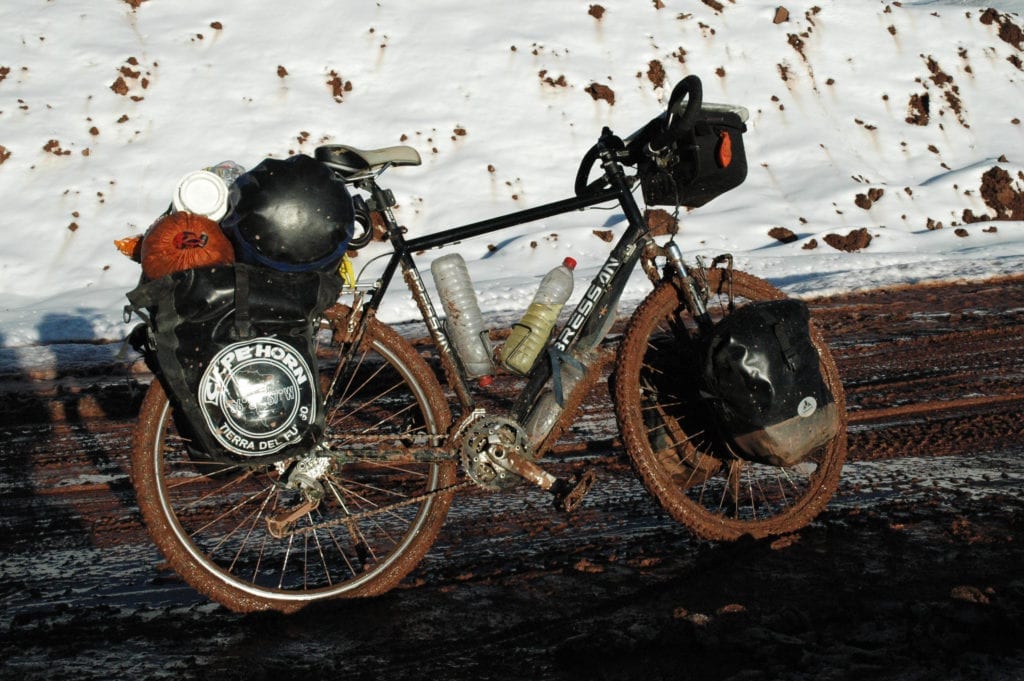
Now I’m back home for almost a month and it’s like I’ve emptied a 20,000-piece puzzle on the table, now I’m starting to build the edge. I want to help others like us to undertake journeys that will change their lives. Today I respond to the messages on social media of those who have doubts about equipment and roads, I want to seriously start publishing videos where I put at the service of others what I learned in this 70,000km.
My life has changed since I got on my bicycle to travel. This is why I would like everyone to be as happy as me and so I want to be the wind behind anyone who has the desire to leave.
You can follow Dino on his website:
Dino Lanzaretti | Per Partire in Bicicletta – His Facebook page – On Instagram @DinoLanzaretti


